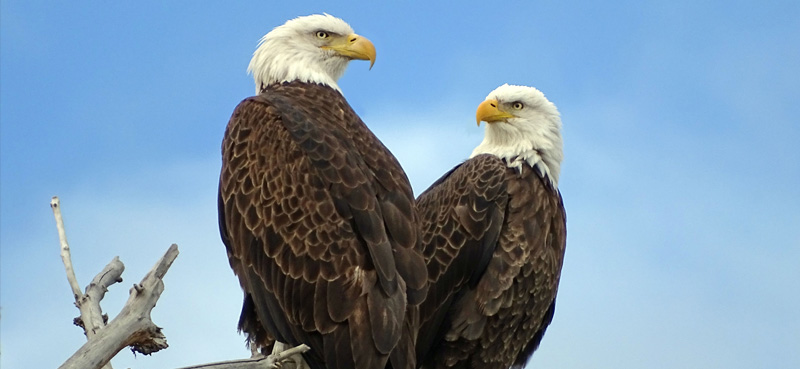As I stumble out of my tent at 4 a.m. my eyes squint to a blanket of stars in the dark sky above me. My red headlamp light illuminates my tent as I gather my gear, and get ready for my ascent to Columbine falls in Rocky Mountain National Park, a mere 2.6 miles and 1,475 ft gain in elevation to the falls along the Longs Peak trail. This trail is popular among hikers that attempt to summit Longs Peak.
This summer, Bird Conservancy of the Rockies partnered with the Colorado Natural Heritage Program to host two undergraduate students from Colorado State University as interns through the Siegele Internship Program. This internship program creates paid opportunities for early career professionals to get hands-on experience with biologists to gain field skills, explore their interests, and assist with conservation and monitoring programs across a variety of environmental applications.
Bird populations have been declining for decades, with three billion birds lost over the last 50 years. Understanding the drivers of these loses is a monumental task because most bird species have ranges that span large expanses across a mosaic of land uses.
What do Mexican Spotted Owls tell us about restoring frequent-fire regimes in the southwestern U.S.? Well, quite a lot actually.
Have you ever wondered how bird conservation is coordinated across organizations and spatial scales? OK, maybe not, but imagine for a moment if it wasn’t. At all. Do you think there would be any hope of recovering populations and saving the hundreds of species that are spiraling towards extinction?

Bird Conservancy is currently recruiting volunteers to participate in Bald Eagle Watch. In partnership with Colorado Parks and Wildlife, staff and volunteers monitor Bald Eagles throughout Colorado, obtaining data that is needed for biologists to develop best practices for their conservation now and in the future, as the human population continues to grow.
What: Monitor and collect data on Bald Eagle nesting behavior and productivity. Report any disturbances that may impact nesting eagles. Information obtained helps wildlife managers and conservation groups ensure continued healthy populations of Bald Eagles.
When: Focus is on the breeding season, which is February to July. Many volunteers continue to monitor their nests year-round.
Where: Throughout Colorado. This year, we are particularly interested in recruiting volunteers who would like to monitor birds in or near the following counties – Garfield, Routt, Eagle, Mesa, Summit, Grand, Gilpin and Park
Who: Anyone who can monitor designated nest(s) weekly for a minimum of one hour, fill out a data sheet and enter it into an online reporting system; can drive to nest site; enjoys monitoring either alone or with another person; and has a spotting scope or binoculars
Training: Training, via ZOOM, will be held on Saturday, January 20, 2024, from 10 a.m. – 12 noon and 1 – 3:30 p.m. Attendance is mandatory, but anyone interested who is unable to participate that day may view the training at a later time.
To sign up to participate or for more information: E-mail [email protected] with your name, e-mail, phone number, and county.
As the summer slowly progresses towards fall many birds are finished nesting and feeding fledglings and are preparing for the next step in their annual cycle. Some will migrate south as far as Central and South America, while others will hunker down for winter in the same areas where they bred. Each morning the dawn chorus is a little quieter and the species list less diverse. To a technician working on the Integrated Monitoring in Bird Conservation Regions (IMBCR) program this signals that the point counts are done for the year and they too will move on to their next adventure.
There are always eyes reflecting back in the beam of my headlamp. Usually, it is deer or elk, their silhouettes looking vaguely alien because of their large ears. Other times, it is a Common Poorwill that sits on the trail, eyes reflecting red, and flutters up in a panic when I walk too close. A handful of times it has been a bear, that crashes away through the undergrowth once it catches a whiff of this unwashed field tech and vanishes astonishingly quickly for an animal so large…
We were almost down to our camp when I noticed two beautifully round orbs staring at us from behind a bush. We both froze in our places while we racked our brains on what to do. It did not take long to draw from what we had learned in our training,
Being a birder means a lot of different things to many different people. Some birders go out every week to count and list as many species as they can find, while others have a yard list of the birds they identify from their window. Read below for a guest blog from Eric DeFonso, a Bird Conservancy seasonal field crew leader for our Integrated Monitoring in Bird Conservation Regions (IMBCR) program. Eric shows how sometimes, birding by sight is not always feasible or possible.


